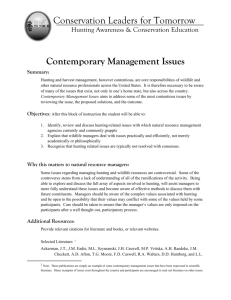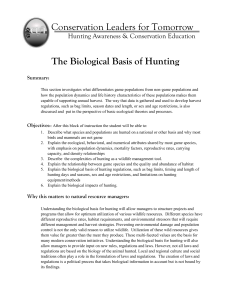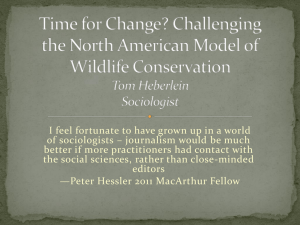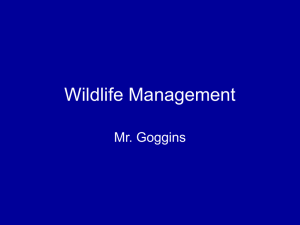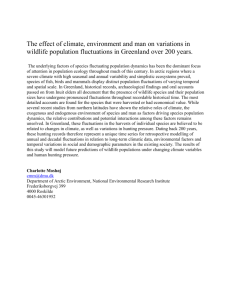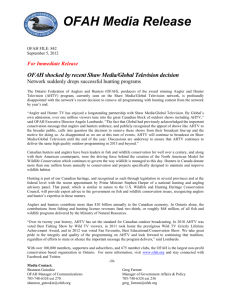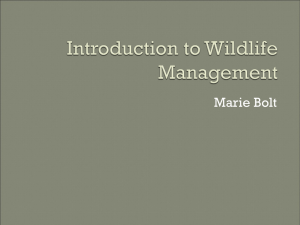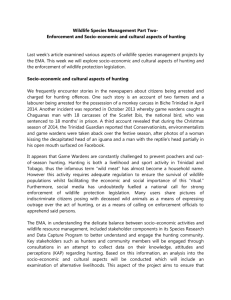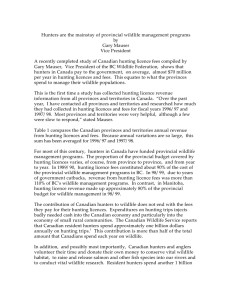Role of Hunting in Wildlife Management
advertisement
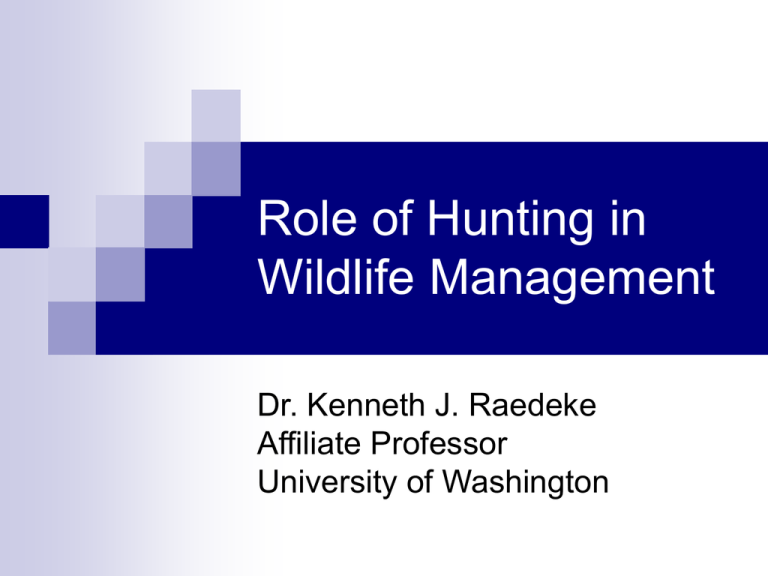
Role of Hunting in Wildlife Management Dr. Kenneth J. Raedeke Affiliate Professor University of Washington Traditional Roles of Hunting Harvest resources (meat, hides, etc.) Manage wildlife populations Reduce problem species Provide recreational opportunities Economic return to society North American Wildlife Management Model Wildlife as a public trust resource Elimination of markets for game Allocation of wildlife by law Kill only for legitimate purpose Wildlife is an international resource Science-based wildlife policy Democracy of hunting Current Big Game Harvests in Washington State (2008) Deer Elk Moose Black bear Mountain goat Bighorn sheep Cougar 35,040 6,826 74 2,115 15 32 188 Game Bird Harvests in Washington State (2008) Wild turkey Pheasants Band-tailed pigeons Doves Ducks Geese Grouse & Quail 5,035 20,000 434 68,735 410,000 74,045 251,472 Economic Value of Hunting (1996 Data) 14 Million hunters in USA Hunters spent $23 Billion in direct expenses Ripple effect of $73 Billion Generated $3.1 Billion in state and federal taxes Created 704,600 jobs nationwide Resulting in household income of $416 Billion 1% of USA workforce Washington State Statistics (2006 data) Hunters 182,000 Days of hunting 2,126,000 Total expenditures$313,134,000 Average $$ per hunter $1,688 Average $$ per Wildlife Viewer $563 Pittman-Robertson Funding Hunter initiated tax on firearms and ammunition of 10% in 1930 Generated $2 billion Currently $150 million per year Funds used for wildlife management by states Wildlife Harvest Models Annual surplus model Large mammals Bird populations Maximum Sustained Yield (MSY) Large mammals (control situations) Population control model For pest or eruptive populations Annual Surplus Model Hunting takes the annual surplus production that can not be supported by the habitat Based on concept of compensatory mortality That is, hunting mortality replaces other forms of mortality and is not additive Maximum Sustained Yield Model Produces the highest harvest from a population Reduces population to half of carrying capacity of habitat Based on logistic growth model Used for deer/elk damage problems on private commodity lands Maximum Sustained Yield Control of Wildlife Populations Snow geese in western USA and Canada White tailed deer in mid-west and eastern USA Deer and elk on private commodity lands Why do I hunt? Family tradition in rural America Challenge of the chase Get out doors and appreciate nature Spend time with friends and family Obtain interesting meat and artifacts Support wildlife conservation License fees ( $500 per year) Tax on sporting goods Travel to exotic lands

